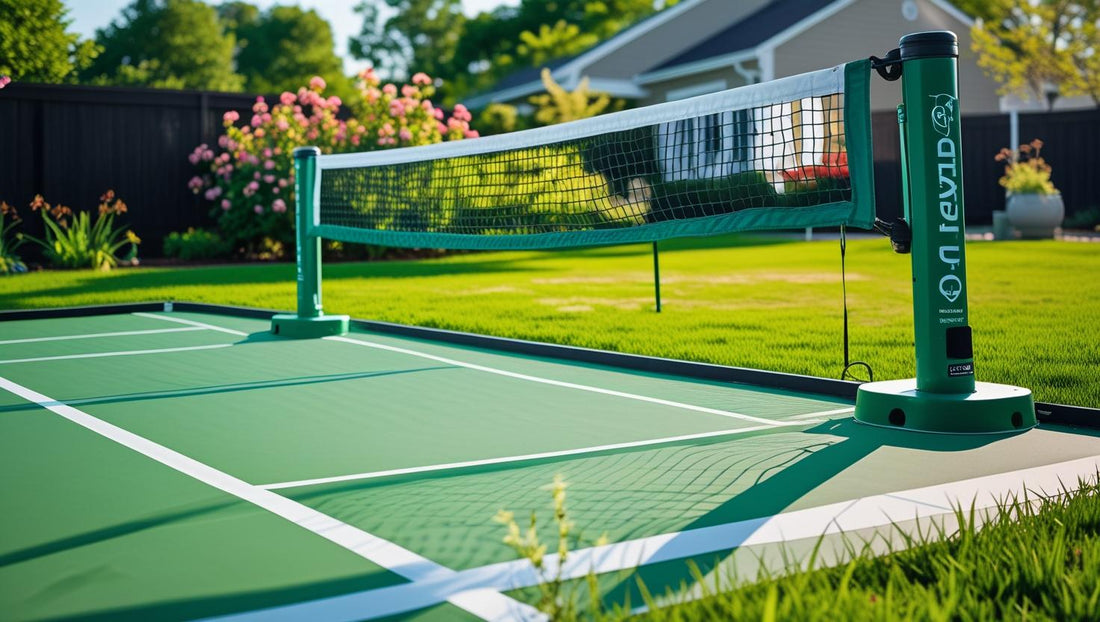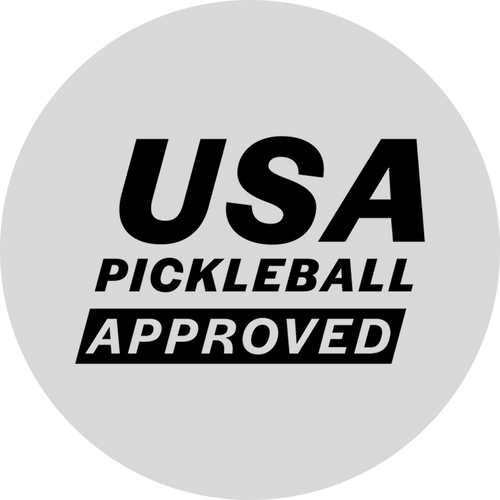
Building the Perfect Pickleball Court: Tips for Your Backyard Oasis
Share
Imagine walking out of your front door and then straight onto your backyard pickleball court, your private space for fun fitness, friendly games. With the popularity of pickleball growing by 2025, more fans are avoiding the crowded courts of public courts and creating their courts at home. It's a unique and valuable improvement to your home and an ideal method to keep active with your family and friends whenever you want to.
Choosing the Ideal Location for Your Court
Begin by choosing the ideal spot within your yard. It is best to choose an area that is area that is level with a low slope and adequate drainage. Be aware of the sun's path. An east-west layout is often a source of an eerie glare when playing evening and morning games, so choose an east-west layout whenever possible.
Also, consider the sound and wind. Natural windbreaks, such as fences or trees, can help to reduce winds, and the right placement will prevent noise from affecting neighbors.
Backyard Pickleball Court Dimensions and Layout
A normal pickleball court is 20 feet wide and 44 feet in length. You'll also require the space for buffers, ideally 10 feet across all sides, for secure moving.
Backyard Court Options:
- Full court: Best for larger yards.
- Half-court is Ideal for practicing or smaller areas.
- Court with multi-use: Combining pickleball with other games.
Utilize GatorStrike's court layout guide to lay out your court with accuracy.
Surface Selection: Best Materials for Home Courts
The surface of the court affects play and long-term durability. Think about these possibilities:
|
Surface Type |
Pros |
Cons |
|
Concrete |
Durable, smooth, long-lasting |
Joints are hard on joints and can cause cracks |
|
Asphalt |
A little softer, it is easier to set up |
It requires sealing and can warp |
|
Modular Tiles |
Simple to put in, Portable, cushioned, and easy to install. |
A higher upfront cost |
Modular court tiles for pickleball of GatorStrike provide excellent drainage, traction, and vibrant color options - perfect for creating a perfect backyard oasis.
Creating a Smooth Playing Surface
A high-level, even court is crucial. Here's what you need to know:
- The surface should be graded to ensure drainage.
- Make sure to compact the soil before pouring concrete or installing tiles.
- Avoid areas that are low and collect water.
- If you are using concrete or asphalt, apply a non-slip acrylic coat for safety and grip.
- Painting Accurate Pickleball Court Lines
Court lines are crucial to the game:
- Make use of Paint that is UV-resistant paint to avoid fading.
- Be sure to follow the standard markings: baseline, sidelines, Service zones, baseline, and the kitchen line.
- Take a look at the lines stencil kits to make DIY projects.
Fencing and Netting for Backyard Pickleball
Fences keep balls out of the game and help ensure the safety of players. Choose:
- Fences made of chain-link are popular and economical.
- Privacy panels are optional to improve aesthetics and noise reduction.
- Normal height of 36 inches on post, 34 inches in the middle.
- Select the weather-proof pickleball net, such as GatorStrike Tournament Net
- GatorStrike Tournament Net
Lighting and Seating for Ultimate Comfort
If you intend to play in the evening:
- Installation of the LED floodlights on poles that are tall to decrease shadows.
- Place lights behind the baseline to provide optimal coverage.
Also think about:
- Folding chairs or benches close to the sides.
- Seating with shade with pergolas, umbrellas, or umbrellas.
- You can add a GatorStrike Snapback hat and a cooling towel to your essentials for games.
Maintaining Your Backyard Pickleball Court
Routine maintenance is a great way to ensure the longevity of your investment.
- Make sure to sweep leaves and debris frequently.
- Check and clean your network as well as your fencing.
- Re-seal surfaces at least every 2 to 3 years (if appropriate).
- Make use of GatorStrike Paddle Strike wipes to ensure your equipment is in good condition.
In the winter months or rainy weather, it is recommended to cover the court with a tarp that is waterproof or weatherproof tiles.
Final Thoughts:
Absolutely. No matter if you're a pro or are just beginning your journey with having a backyard tennis court can add a lot of worth to the home as well as your life. It is a great way to improve your health, have fun, and socialize all in your backyard.
Are you ready to build? Check out GatorStrike's equipment for pickleball on this page and turn your backyard into the next place to be for action in pickleball.
FAQs
How can you create a backyard tennis court?
To build a backyard pickleball court, you need to choose a space that is level, construct a surface that is suitable, such as modular tiles or concrete paint court lines that are regulation, and then include fencing and nets. You should think about lighting and seating to ensure the comfort of your players, and keep the court regularly to ensure long-term enjoyment.
Do I have the possibility of building an indoor pickleball court within an area with a limited backyard?
Think about a half-court or wall to practice in, in case you are limited in space.
What's the best type of surface for a pickleball court in your backyard?
Modular tiles are perfect for courts at home, as they are easy to play on and are weatherproof.
What's the cost of making a court for pickleball in the backyard?
The cost ranges from $3,000 to $10,000. Depending on the type of fencing, materials, lighting, and other accessories.


 FREE SHIPPING IS AVALIABLE!
FREE SHIPPING IS AVALIABLE!





